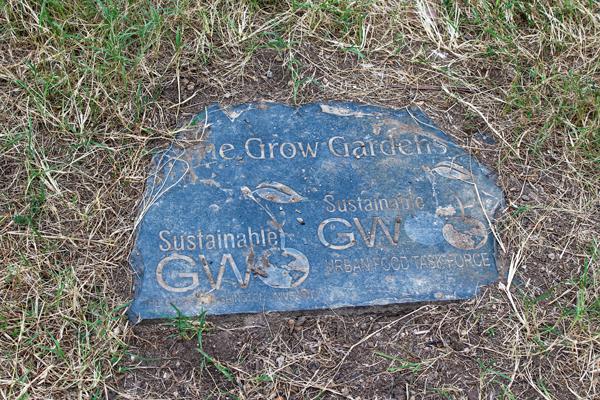GW rose 10 spots this year in a ranking of eco-friendly universities.
The University placed No. 22 out of 201 institutions in the Sierra Club’s “Cool School” rankings released earlier this month — up from the No. 32 spot last year. GW’s sustainability leaders said the high scores in categories like planning and innovation reflect recent developments on campus that prioritize the environment.
Meghan Chapple, the director of sustainability, said she connects the higher ranking to the new sustainability projects outlined in the University’s zero-waste plan, which was released this semester. The plan emphasizes the use of solar compactors and an expansion of recycling and composting systems.
“The University continues to work toward the goal of carbon neutrality by 2040 through renewable energy and conservation projects, transportation reduction initiatives and sustainable procurement practices,” Chapple said in an email.
The rankings are determined by the quality and extensiveness of an institution’s environmentally sustainable projects, according to the Sierra Club’s website. Universities are scored on a 1,000-point assessment in categories like transportation, campus energy use and divestment from fossil fuels.
Kathleen Merrigan, the executive director of sustainability, credited the higher ranking to a focus on sustainability in academics, like the launch of three new core sustainability courses.
“The undergraduate sustainability minor continues to grow,” Merrigan said in an email. “We encourage students to become sustainability minors and will continue to work with faculty to build sustainability content into their courses.”
GW received a score of zero in only one category — investments. The University did not provide responses to questions about what types of energy they invest in. Out of the 201 universities that participated in the survey, 109 did not answer questions about investment, according to the Sierra Club’s website.
Last March, officials said the University would not divest from its holdings in fossil fuels and declined to provide more information on the University’s investment portfolio.
Corey Hawkey, the sustainability program manager at Arizona State University — ranked sixth on the list — said more universities are creating zero-waste plans like GW’s.
“I would say that moving towards zero-waste is something that a lot of institutions are starting to make a little bit more mainstream,” Hawkey said. “And I think you see that originate out of athletic venues and start to permeate across campuses.”
Jason Mark, the editor of Sierra magazine, said he has noticed more eco-friendly universities implementing projects focused on using sustainable energy.
GW signed an agreement with American University and GW Hospital in 2014 to obtain more than 50 percent of its energy from solar power.
“I would say it’s clean power purchasing and/or renewable energy construction. We see in some schools not only deciding who and how they’re buying electricity energy from, but doing real retrofits,” Mark said.
He added that these rankings hold universities accountable to their commitments to sustainability projects.
“I would like to think that it creates a sort of virtuous cycle of competitiveness,” Mark said. “Schools wanting to do better — to score higher and perform better — sort of a race to the top. So that’s our hope.”







